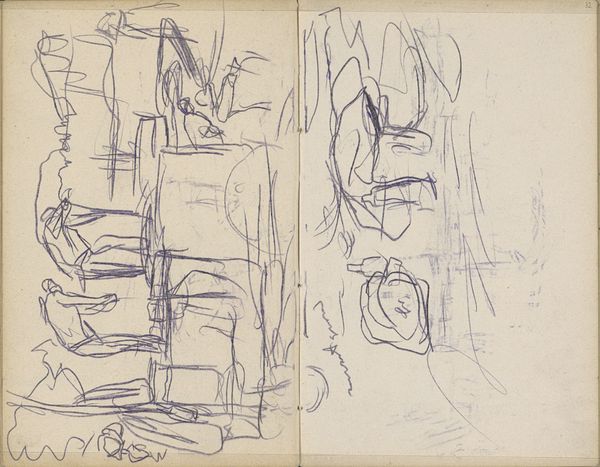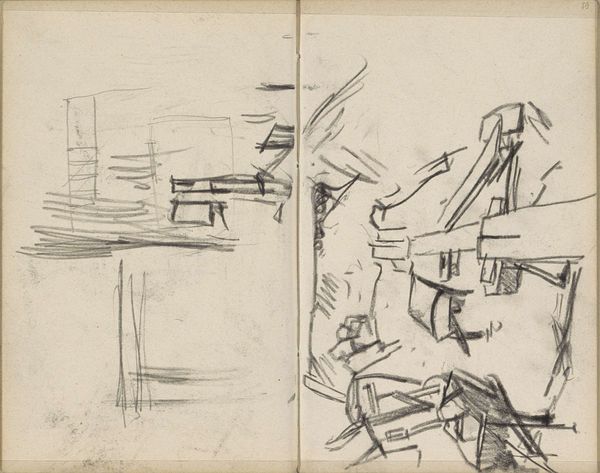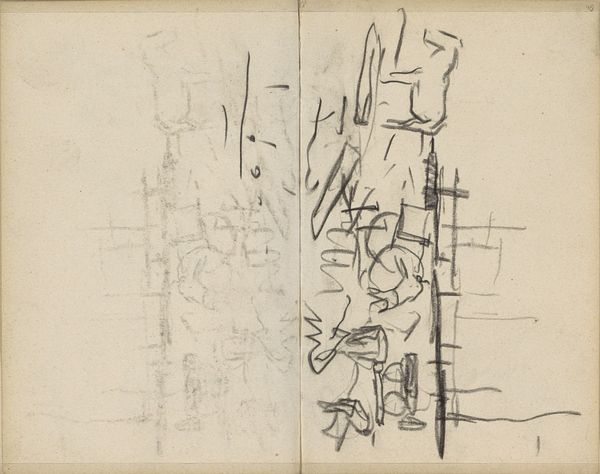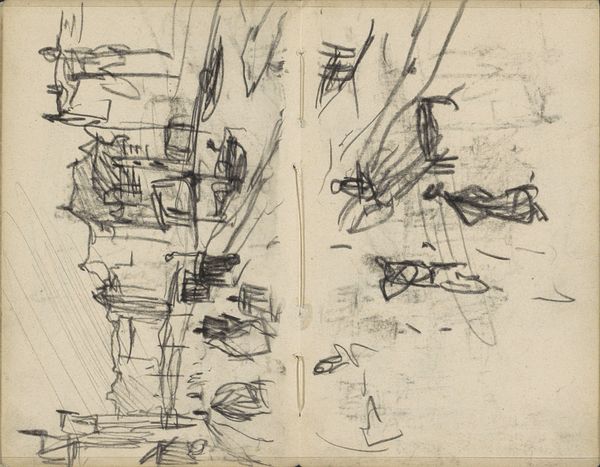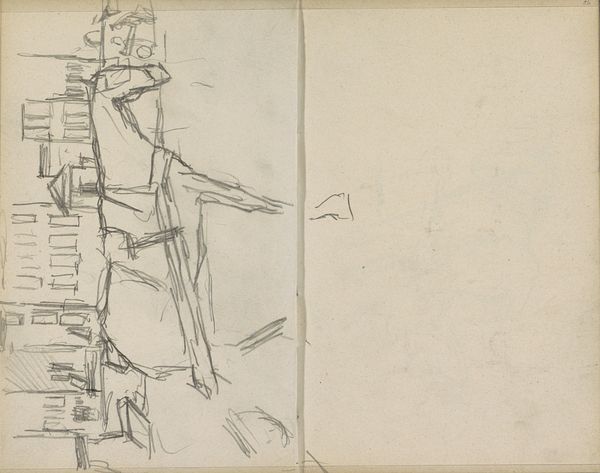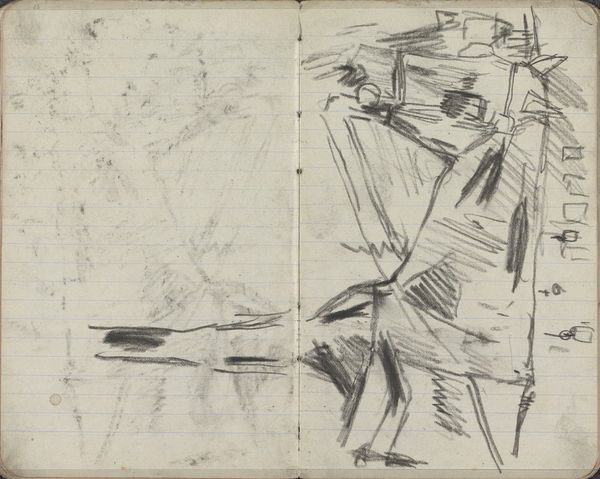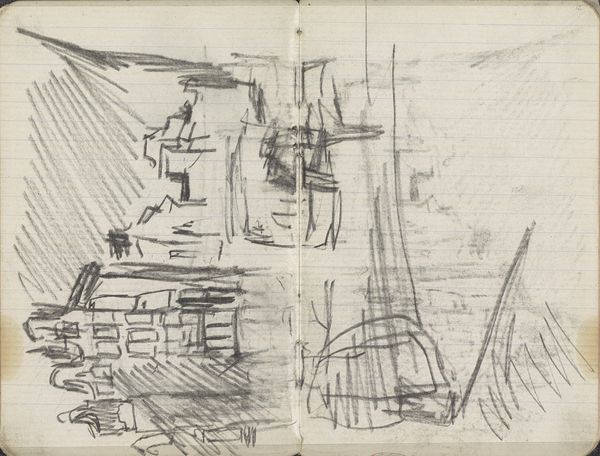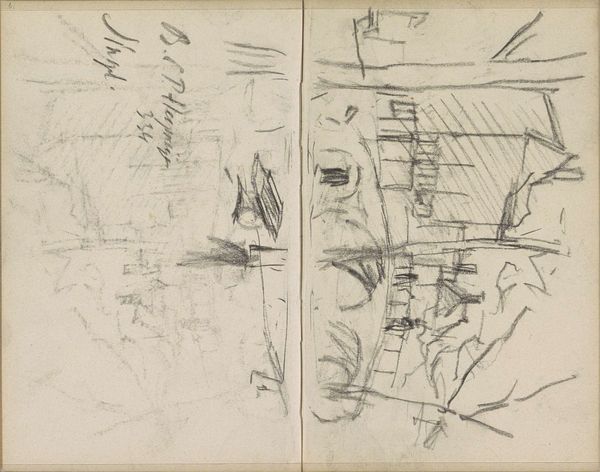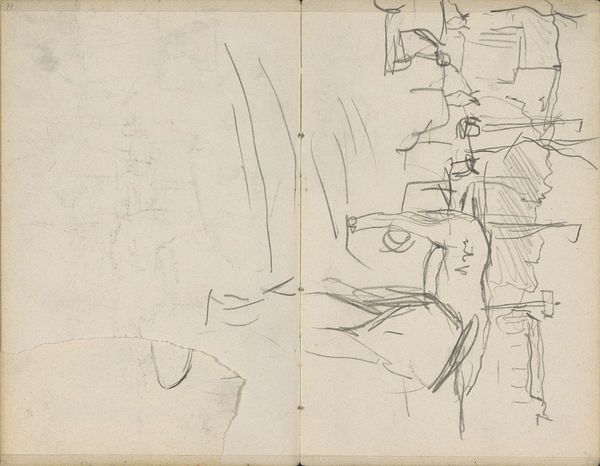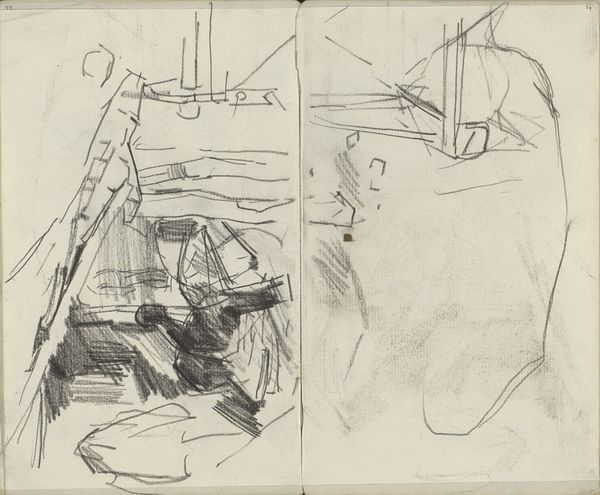
Gezicht op een straat in Amsterdam met figuren c. 1902 - 1914
0:00
0:00
georgehendrikbreitner
Rijksmuseum
Copyright: Rijks Museum: Open Domain
Curator: Before us, we have George Hendrik Breitner’s “Gezicht op een straat in Amsterdam met figuren,” or “View of a street in Amsterdam with figures," created sometime between 1902 and 1914. It's a pencil drawing on paper. What's your first impression? Editor: Raw, almost feverish. The haste is palpable; you can almost hear the scratch of the pencil across the paper. It's like he’s trying to capture the fleeting moment before it disappears, you know, as material evidence. Curator: Exactly. I find that frenetic quality quite powerful. Breitner was very interested in the psychological impact of urban life, and this sketch, with its quick strokes and shadowy figures, perfectly conveys the sense of alienation one might feel in a bustling city. Look at how he renders the figures – barely there, ghost-like. Editor: And I’d argue, notice the surface, the kind of paper used—the cheapness, the lack of preparation...the work isn’t built to last in any sense. This is pure ephemera from modern city life, where the material itself speaks to impermanence. He even mirrors the image in the adjacent page of the book. Curator: I think that's interesting that you mention the adjacent image since its a mirror and repetition creates a sort of doubling effect, as if the street exists both in the moment and in memory. The symbolic weight of this artistic choice adds to the narrative depth of this otherwise modest sketchbook image. It asks, 'What do we actually see and what do we take away from these moments?". Editor: It speaks, to me, of an artistic processing, or even the simple mechanics of observation and repetition. Like an assembly line cranking out visual information about modern life. We consume and we recreate without imbuing too much sentiment. Curator: And this perhaps reveals a certain detachment, or even the numbing effect of modern life on the psyche. It reflects the spirit of an age grappling with change and anxiety. Editor: An age dealing with constant exposure... where production, and perhaps not careful contemplation, is the dominant force. Curator: Thank you for sharing.
Comments
No comments
Be the first to comment and join the conversation on the ultimate creative platform.
